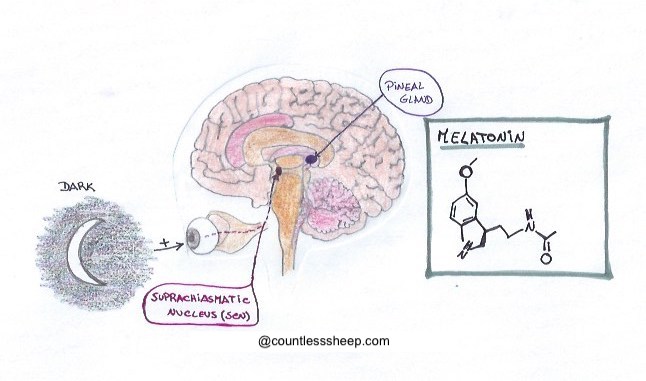Since life has emerged on Earth, 3.7. billion years ago, the rising and setting of the Sun has been a constant. Whether it was light or dark, it was day or night. Humans, and all other organisms, have evolved with this imposed biological rhythm; and, human physiology was determined by the light/dark cycle.
Every cell in our bodies exhibits a circadian rhythm, a 24h-cycle synchronized to a light/dark pattern. But, how do cells deep inside in our bodies know when it’s dark outside? The answer to that question is Melatonin (N-acetyl-5-methoxytryptamine), the messenger from our brain to communicate to our cells that it is dark. The master clock of the body, the Suprachiasmatic Nucleus (SCN) receives darkness information from the retina and sends it to the brain. From there it provides an input to the Pineal Gland, to produce melatonin. Melatonin secretion increases in the evening, and is stimulated by darkness; whereas light rapidly suppresses melatonin production.
Melatonin is not unique to humans. It is spread through out the animal kingdom, plants, bacteria, and even unicellular organisms have it. There’s no species that has been identified so far that does not contain Melatonin. This expresses the importance of this molecule to life.

